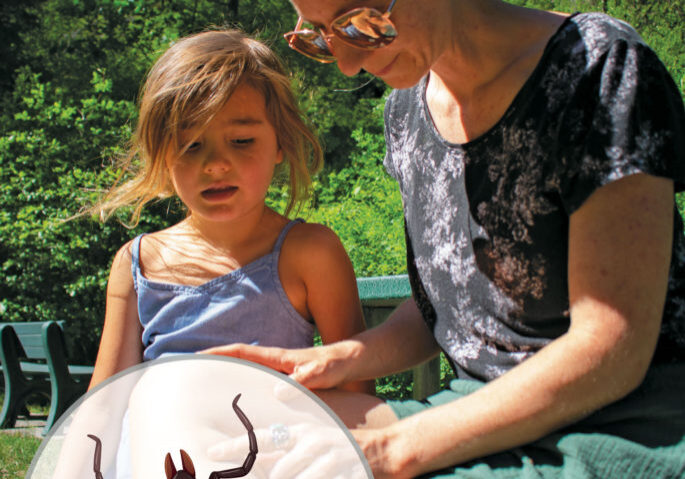Prevention Against Lyme Disease is Every Month
Lyme disease is an infectious, bacterial disease transmitted to humans via a tick bite, but it can also be spread by mosquitoes, fleas and mites. Lyme is an acute inflammatory disease that can become a chronic and progressive illness if untreated. Because infections are most common in the spring and early summer, May is Lyme Disease Awareness Month. Education is your best prevention against Lyme Disease.
Named in the mid-1970s for Old Lyme, Connecticut, where a large number of children were infected, of infected children was afflicted, the disease was then recognized as the cause of many cases for arthritis and neurological symptoms and skin conditions in Europe and America. In 1981 ticks were discovered to be the main cause for the disease. Although Lyme Disease is endemic in several states on the East Coast, California reports around 100 confirmed cases per year, with Northern California representing a higher than average prevalence.
In California, the tick that carries the disease is the black-legged tick. Adult ticks are the size of an apple seed; the nymphal tick as small as a poppy seed.
For those Californians who tend to be outdoor enthusiasts, as well as dog owners, hiking and camping bring human beings and their canine companions into nature where the black-legged ticks are in large supply. Once you inform yourself of the facts connected to the spread of this disease, proactive prevention becomes a manageable responsibility.
The tiny, nymphal ticks tend to be the most likely culprit for an infection. Rigorous and disciplined examination of both clothing and skin is the first line of defense. In combination with body checks, treating shoes and clothes with vector deterrent, making sure your pet is protected and treating your yard are all steps to prevent a possible bite.
If someone is bitten by a tick, prevention then must become action. In this initial stage of infection, a course of antibiotics has been proven effective in the treatment of the disease. Physical ailments seem more commonly to be brought on by prolonging diagnosis and treatment.
If you find an embedded tick, remove it, place it in a plastic bag and bring it to your nearest lab or veterinarian for testing. A tick that tests positive for Lyme disease means that exposure and possible infection have occurred, and the individual should be treated as soon as possible by a physician. Don’t wait for the classic bullseye rash or symptoms of illness to occur.
Safe removal of a biting tick is important and needs to be done cautiously and with an informed approach. Additionally, ticks carry more diseases than Lyme disease and care must always be exercised when a tick is discovered. You will need a pair of pointy tweezers; specialized tweezers are an inexpensive investment. Disinfect the area with rubbing alcohol. Grasp the tick as close to the skin as possible and pull the tick out with slow but steady pressure in the direction opposite to which it went in. Disinfect the area again.
The Lyme Center is a nonprofit resource located in Chico. The Center offers support groups, helps people pay for testing and is currently working toward the goal of installing signs in parks to raise awareness of the tick presence. The Center will be hosting a fundraising event for Lyme Disease Awareness Month on Friday, May 4, at the Women’s Club in Chico. LymeAid 2018 will feature information about Lyme disease, live music and a silent auction and raffle from 6 to 9pm. All donations go toward promoting awareness, education and advocacy about Lyme disease and other tick-borne illnesses within the North State. thelymecenter.org
May is Lyme Disease Awareness Month: LymeAid benefit on May 4th from 6 to 9 pm. All donations go toward promoting awareness, education and advocacy about Lyme disease and other tick-borne illnesses within the North State. THELYMECENTER.ORG
Posted in: Health & Nutrition
Comment Policy: All viewpoints are welcome, but comments should remain relevant. Personal attacks, profanity, and aggressive behavior are not allowed. No spam, advertising, or promoting of products/services. Please, only use your real name and limit the amount of links submitted in your comment.
You Might Also Like...

Veg Out! – How to Get Your Kids to Eat Fruits and Vegetables
If you’ve read anything health-related in the last ten years, you know there have been all sorts of trends when it comes to acceptable eating. Dairy, soy and eggs have […]

Little Lies That Can Ruin Your Heart Health
Is it so bad to have a second piece of cake or to skip a week of exercising when you feel overwhelmed by work, kids, life? The experts say no, as […]

Create Intimacy Without Taking Your Clothes Off
By the time your kids are asleep, your mood is exhausted, not erotic. In theory, you want to connect with your partner. In reality, you’re too tired to make the […]

Tick Bites Can Be Serious – Know The Symptoms and Take Action
As the water rushed down my skin I brushed something on my back. It was stuck to my back in fact. Was it food from the kids’ sticky hands? I […]


